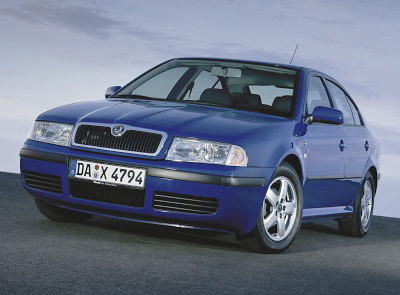In Czech, the term 'Škoda' literally means "shame", "damage" or "loss", apparently a nickname for someone who is
a bungler or accident-prone. Yes Really! No matter how great the company's global presence is after years and how sublime you consider the Octavia!! Or the brand's new logo.
If you say ‘To je skoda‘ in Czech it means ‘That’s a shame‘ or ‘That’s too bad‘ or simply imagine a sad face. There are even many folk jokes associated with Skoda cars. "What do you do if your Skoda is attacked by a swarm of killer bees? Stop pushing and jump inside"! "Why are there rear windscreen wipers on a Skoda? To clear off the flies that rear-end it"!!
So why would someone name a car 'Skoda' or "shame"? Get to know some history and you would be amazed at the irony.
So why would someone name a car 'Skoda' or "shame"? Get to know some history and you would be amazed at the irony.
As far as the name 'Skoda' in Czech language is concerned, it is five hundred years old in usage. The man who gave his name to the company, Emil Skoda, may have belonged to a folk cluster or clan whose original ancestors may have encountered a notable setback in business or agriculture. There is also 'Koista', which means "someone who did very well,
probably at the expense of someone else", 'Vajdlek', which means "a nice
little earner" and 'Nouza', which means "war, want or woe".
Emil Skoda established Skoda Works in 1860s, an arms manufacturer which has nothing to do with automobiles. In fact, Mr. Skoda would have never thought that his name would be popularly identified only as cars in the next century. He never produced cars in his lifetime.
The origins of what latter became Skoda Auto roots to a Czech company which started producing bicycles in 1895. And that's why you still find "Since 1895" caption in all Skoda ads. It was in 1894, young Václav Klement, who was a bookseller, returned his bicycle to its German manufacturers with a written letter in Czech, asking them to carry out repairs. He then received a reply in German, stating:
"If you would like an answer to your inquiry, you should try writing in a language we can understand".
Disgusted Klement with linguistic feelings now wanted to start a bicycle repair shop on his own, which he did with Václav Laurin, an established bicycle manufacturer in the nearby town, in 1895. They soon expanded their facility to produce motorcyclette and they named their company as 'Slavia', representing their ethnic region. By 1905 the firm was manufacturing cars in the Czech land.
In 1924, Laurin and Klement (L & K) company ran into financial crisis and was acquired by Skoda Works to realise its car production dreams. Most of the later production took place under Skoda's name. The subsequent years saw numerous happenings to the production facility, passed the tumultuous second world war era and became a part of planned economy little latter. The fall of communism in Czechoslovakia led to transfer of shares of the company to the Volkswagen AG. Skoda became the fourth brand of the German group.
 |
| This winged arrow first featured in 1926. For more than 8 decades, it represents Skoda even today. |
Ironies are aplenty here in this piece of history. L & K originated from Mlada Boleslav, a small town just
north of Prague where the car manufacturer is based until today, while
Skoda Works is from Pilsen. But everything else, brand name and logo, identifies Skoda Works. The winged arrow of the brand's logo is in fact the brand logo of Skoda Works.Yet
without Laurin and Klement, Skoda Works would have never produced
cars. Strictly speaking, what VW bought is L & K and not
Skoda – despite identical name and brand logo, Skoda Works in Pilsen is
again an independent company that is no more connected to VW and Skoda
Auto! Klement started an Czechoslovakian bicycle shop to unshackle the domination of Germans, but the company now is ironically under German group VW!
The new corporate logo that the company has adopted recently is the sixth one in its 118 years of existence. With plans to double its global sales by year 2018, the new design is perceived with much reverence. The winged arrow is now much larger and clearly visible. The hue of the winged arrow has been changed from “natural green” to the
new lush “Škoda Green”, and the outer area is highlighted with a chrome ring. The 'Skoda Auto' wording is no longer present in the logo. The logo is smart and rejuvenating; as futuristic as the company works on its products too.
 |
| New logo designed in 2016 |
The Skoda under VW group is no more Czech in tradition. But all those jokes in the end served to keep the
name alive. Not only did the former East European tractor maker survive turbulent Cold War times and all those jokes about its cars but it subdued the worst defect of all in modern
marketing terms: having a real lemon of a name.
Also Read: The Ultimate Journey Of Volkswagen
Also Read: The Ultimate Journey Of Volkswagen

